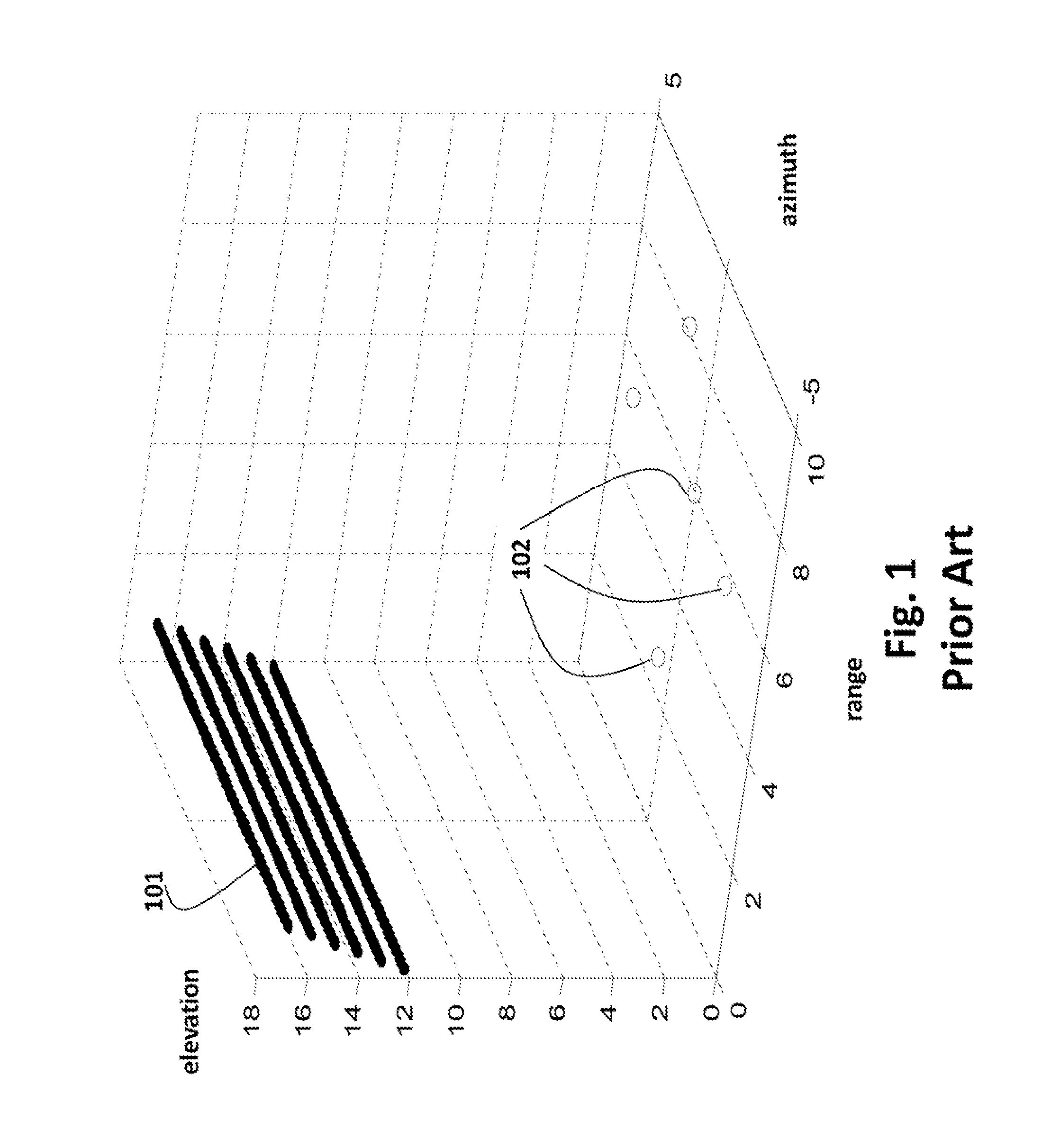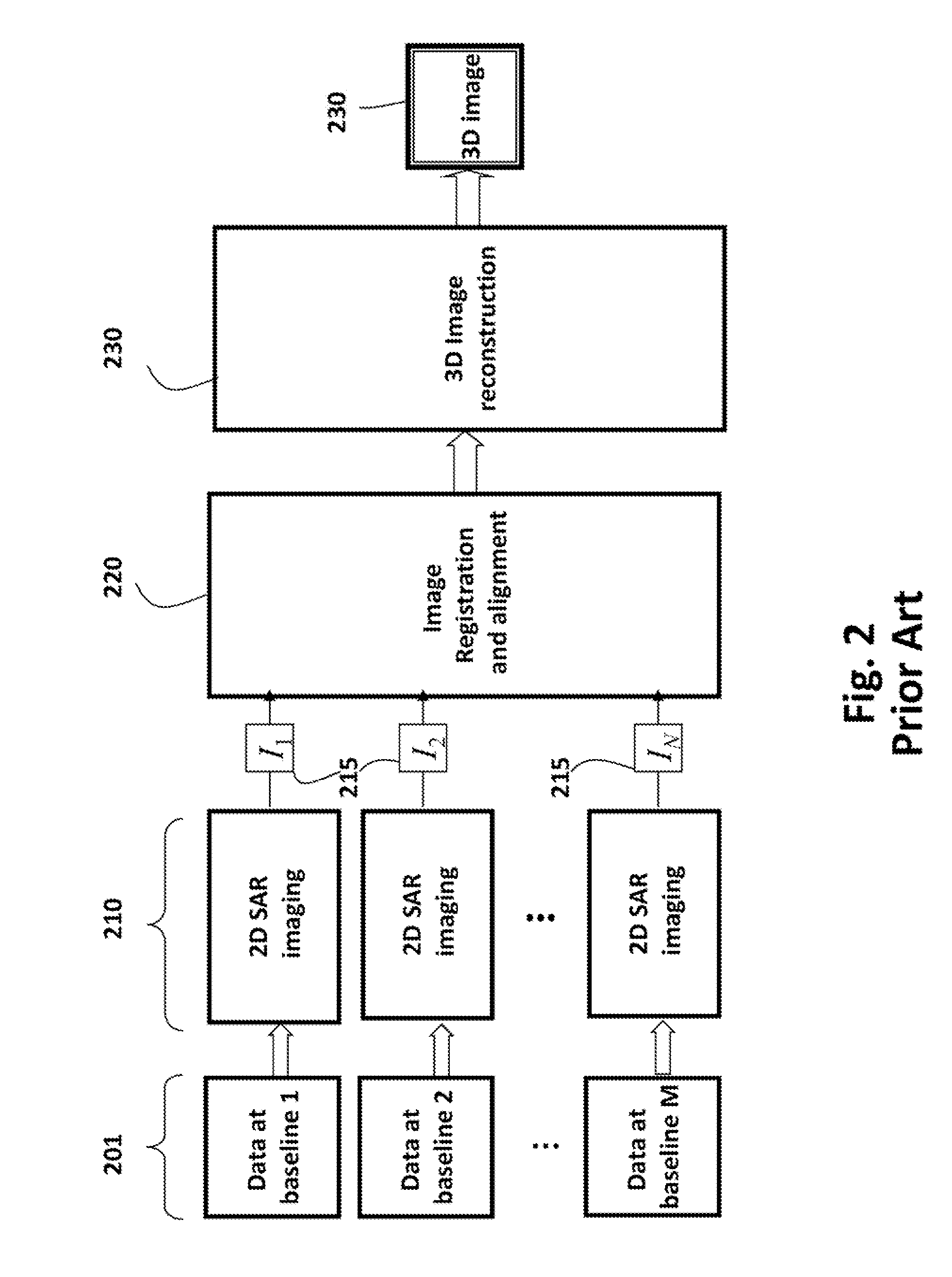System and Method for 3D SAR Imaging using Compressive Sensing with Multi-Platform, Multi-Baseline and Multi-PRF Data
- Summary
- Abstract
- Description
- Claims
- Application Information
AI Technical Summary
Benefits of technology
Problems solved by technology
Method used
Image
Examples
Embodiment Construction
[0022]As shown in FIGS. 3 and 4, the embodiments of the invention provide a method lot generating a synthetic aperture radar (SAR) 3D image. The method acquires data sets at multiple baselines 301 and multiple pulse repetition frequency (PRF). The multiple base lines can be established using a single platform performing several passes over an area of interest, or multiple different platforms passing over the same area.
[0023]For the purpose of this description, we consider point scatterers 302 as well as 3D objects placed in a 3D space. We consider a total of 70 baselines randomly distributed in space along elevation direction. These baselines are selected from 281 possible baselines, uniformly spaced along the elevation, see FIG. 3. The total number of baselines is substantially less than for a conventional 3D SAR system.
[0024]In our simulation, we only need 25% of total baselines needed for a conventional 3D SAR system, yet we can increase the elevation resolution by about 4 times....
PUM
 Login to View More
Login to View More Abstract
Description
Claims
Application Information
 Login to View More
Login to View More - R&D
- Intellectual Property
- Life Sciences
- Materials
- Tech Scout
- Unparalleled Data Quality
- Higher Quality Content
- 60% Fewer Hallucinations
Browse by: Latest US Patents, China's latest patents, Technical Efficacy Thesaurus, Application Domain, Technology Topic, Popular Technical Reports.
© 2025 PatSnap. All rights reserved.Legal|Privacy policy|Modern Slavery Act Transparency Statement|Sitemap|About US| Contact US: help@patsnap.com



